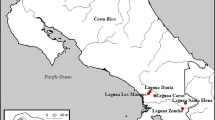Abstract
The history of natural fire since 37 kaBP and its relationship to climate for the northern part of the South China Sea are revealed from the statistic study of charcoal particles and associated pollen data from deep sea core 17940 (20° 07’N, 117° 23’E, 1 727 m in water depth). Our study indicates that, during the last glaciation, the concentration of charcoal and the ratio of con centration between charcoal and terrestrial pollen are much higher than that of the Holocene. This can be explained as the relatively high strength and frequency of natural fire during glaciation which is probably due to the drier climate; during the Last Glacial Maximum (LGM), the substantial rising of the concentration of large and medium charcoal particles probably suggests the local source area of the natural fires, i.e. the exposed continental shelf; moreover, the correlation between charcoal concentration with different size and pollen percentage may elucidate different transport dynamics. During the glacial time, almost all the peak concentrations of small particles correspond with the peak pollen percentage ofArtemisia, an indicator of comparatively dry climate, while for large particles, their concentrations always lag behind small particles and thus change with pollen percentage of montane conifers implying relatively cold and humid climate. So, it is possible to assume that small particles reflect regional emissions under drier climate and were brought over by strengthened winter monsoon. When the climate became relatively humid, the increasing precipitation carried the large particles accumulated on continental shelf before under arid condition to the studied area.
Similar content being viewed by others
References
Gilbert, L. M., Fire as a factor in the development of vegetation types, Aust. Fores., 1962, 26: 67.
Vanes, R. G., Gibson, L., Hatch, A. B. et al., On the nature, properties and behavior of bush fire smoke, CSIRO, Division of Applied Chemistry Technical Paper No. 1, Melbourne, 1971, 25–36.
Herring, J. R., Charcoal fluxes sediments of the north Pacific Ocean: the Cenozoic records of burning, The Carbon Cycle and Atmospheric CO2: Natural Variations Archean to Present ((eds. Sundquist, E. T., Broecker, W. S.), Geophysical Monography, Washington, D. C.: AGU, 1985, 1–156.
Kershaw, A. P., McKenzie, G. M., McMinn, A., A Quaternary vegetation history of northeastern Queensland from pollen analysis of ODP Site 820, Proceedings of the Ocean Drilling Program, Scientific Results, 1993, 133: 107.
Patterson III, W. A., Edwards, K. J., Maquire, D. J., Microscopic charcoal as a fossil indicator of fire, Quaternary Science Review, 1987, 6: 3.
Wang, L., Sarnthein, M., Erlenkeuser, H. et al., East Asian monsoon climate during the late Pleistocene: High-resolution sediment records from the South China Sea, Marine Geology, 1999, 156: 245.
Sun, X., Li, X., Beug, H. -J., Pollen distribution in hemipelagic surface sediments of the South China Sea and its relation to modern vegetation distribution, Marine Geology, 1999, 156: 211.
Sun Xiangjun, Li Xun, Luo Yunli, Eviromental change from pollen record in deep sea core from northern South China Sea, Quaternary Science (in Chinese with English abstract), 1999, (1): 18.
Sun, X., Li, X., A pollen record of the last 37 ka in deep sea core 17940 from the northern slope of the South China Sea, Marine Geology, 1999, 156: 227.
Liu Tunsheng et al., Quaternary Environments (in Chinese), Beijing: Science Press, 1997.
Wang Pinxian, The Ice-Age China Sea—Status and problems, Quaternary Science (in Chinese with English abstract), 1990,(2):111.
Chen, Y., Early Holocene vegetation dynamics of lake Barrine basin northeast Queensland Australia, Ph. D. hesis, the Australian National University, Canberra, 1986.
Author information
Authors and Affiliations
Rights and permissions
About this article
Cite this article
Sun, X., Li, X. & Chen, H. Evidence for natural fire and climate history since 37 ka BP in the northern part of the South China Sea. Sci. China Ser. D-Earth Sci. 43, 487–493 (2000). https://doi.org/10.1007/BF02875310
Received:
Issue Date:
DOI: https://doi.org/10.1007/BF02875310




